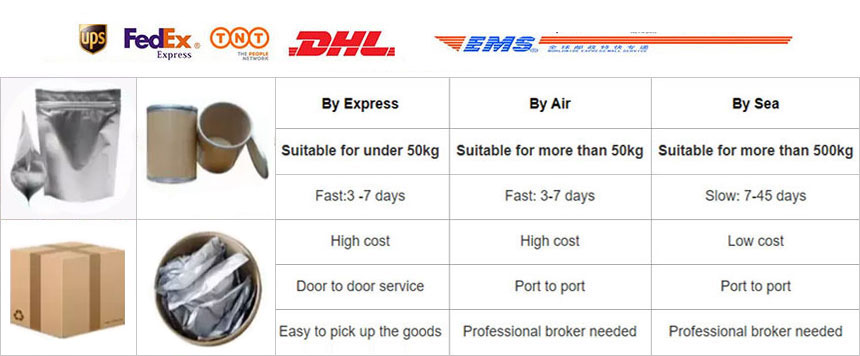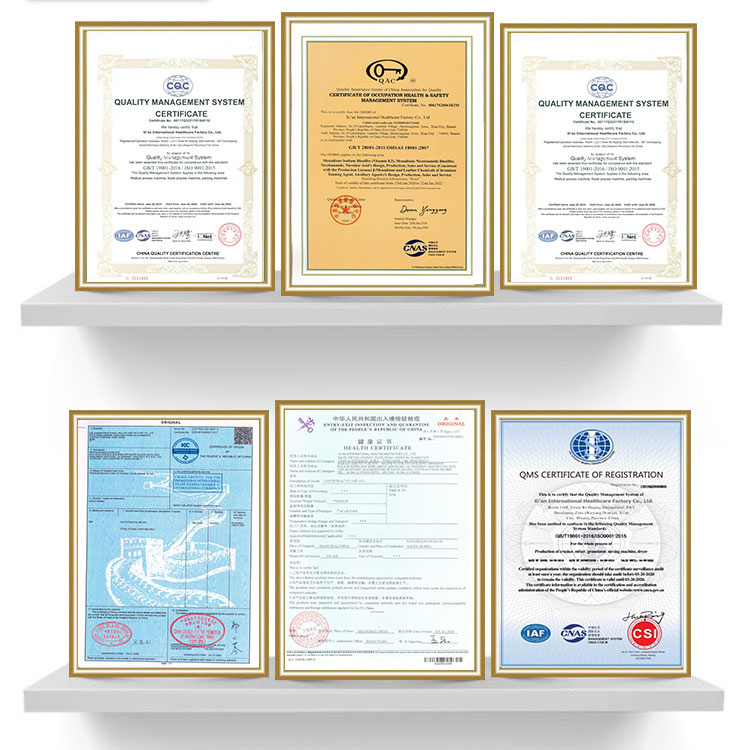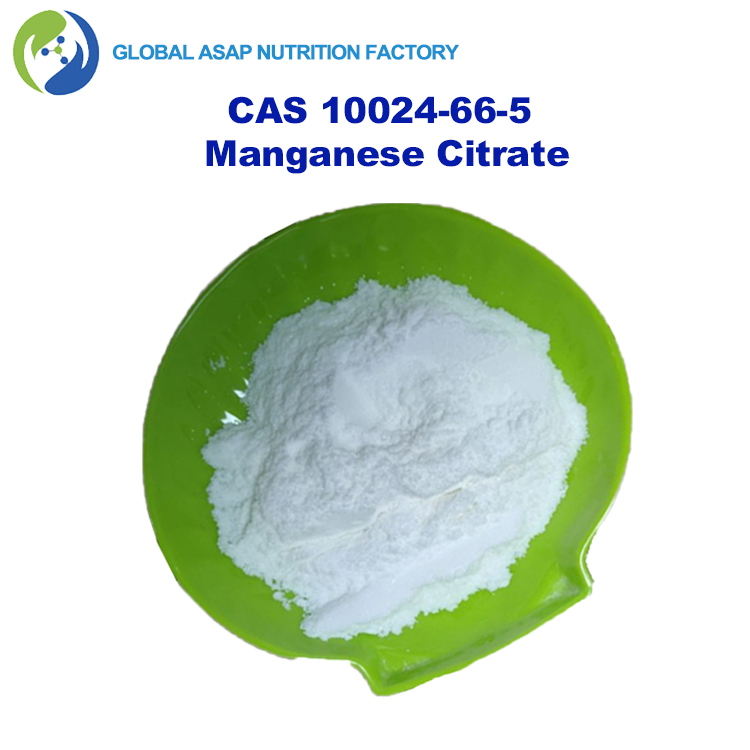Phone: 86-29-89601602
Mail: sales27@interlgroup.com
Add: Room 305 , 3/F , Haipai Decoration Office Building , Yudu Avenue , Yuncheng , Shanxi
high quality Ferric Citrate powder Raw Materials CAS 2338-05-8
Product Overview:
Ferric Citrate powder, also known as ferric citrate, is an edible citrate. It is commonly used as an additive or acid in food and feed. Ferric Citrate is an oral active iron supplement that is an effective phosphate binder. Iron citrate can be used in the study of iron deficiency anemia and chronic kidney disease (CKD). Ferric Citrate powder is used as a food additive, added to biscuits, milk powder and flour, as an iron nutrition fortification agent, and as a feed additive. Ferric citrate is also used as a medicine, and used in photosensitive paper for blueprints.
high quality Ferric Citrate powder Raw Materials CAS 2338-05-8 Attributes
Product name:Ferric Citrate powder
CAS:2338-05-8
MF:C6H8FeO7
MW:247.97
EINECS:219-045-4
Specification:99% min Ferric Citrate powder
Sample:Ferric Citrate powder Avaliable
Appearance:red powder
Storage: Cool Dry Place
Brand:Global ASAP Nutrition Factory
Shelf Life: 2 Years
Test Method: HPLC
high quality Ferric Citrate powder Raw Materials CAS 2338-05-8 Details
Uses and synthesis of Ferric Citrate powder.
Ferric Citrate powder, also known as ferric citrate, is an edible citrate. It is commonly used as an additive or acid in food and feed. Ferric Citrate is an oral active iron supplement that is an effective phosphate binder. Iron citrate can be used in the study of iron deficiency anemia and chronic kidney disease (CKD). Ferric Citrate powder is used as a food additive, added to biscuits, milk powder and flour, as an iron nutrition fortification agent, and as a feed additive. Ferric citrate is also used as a medicine, and used in photosensitive paper for blueprints.
Uses and applications of ferric citrate.
Dietary iron supplement (minor use): Ferric citrate also contains iron, so in theory it can also be used as a dietary iron supplement. However, due to the relatively low bioavailability of iron in ferric citrate and the fact that its main component is ferric iron, its absorption efficiency is not as high as that of ferrous iron salts (such as ferrous lactate and ferrous sulfate). Therefore, ferric citrate is rarely used as a simple iron supplement. Generally, if the main purpose is to supplement iron, ferrous lactate, ferrous fumarate and other ferrous iron salts are preferred. However, for CKD patients who need to control blood phosphorus and supplement iron at the same time, ferric citrate may be a more suitable choice because it has the dual functions of phosphorus binding and iron supplementation.Food additive (small application): In the food industry, ferric citrate may be allowed as a food additive in some countries or regions, used as:
Iron fortifier: It is used in small amounts for food iron fortification, but is not as commonly used as ferrous lactate, ferrous gluconate, etc.
Anti-caking agent: It may be used as an anti-caking agent in some powdered foods.
Acidity regulator: It is used as an acidity regulator in some foods.
However, the application of ferric citrate as a food additive is relatively limited, and it is not as widely used as in the medical field.
Animal feed additive (small application): In animal husbandry, ferric citrate may be used as a supplementary source of iron in some animal feeds, but its application is not as common as ferrous sulfate.
Scientific research use: In research fields such as pharmacology, biochemistry, and materials science, ferric citrate may be used as an experimental reagent to study iron metabolism, drug delivery, biomaterials, etc.
Function of Ferric Citrate powder.
Lowering blood phosphorus levels (treating hyperphosphatemia): As a phosphate binder, the main therapeutic effect of ferric citrate is to effectively reduce the blood phosphorus level of patients with chronic kidney disease (CKD), control hyperphosphatemia, and thus reduce the risk of complications caused by hyperphosphatemia, such as vascular calcification, renal osteodystrophy, and cardiovascular events. Clinical studies have confirmed that ferric citrate can significantly reduce the blood phosphorus level of CKD patients, and its efficacy is comparable to that of commonly used phosphate binders such as calcium carbonate and sevelamer.
Supplementing iron (assisting in improving anemia): Ferric citrate contains iron. Although its absorption rate is not as high as that of ferrous salts, it can release a small amount of iron ions while playing a phosphorus binding role, which is absorbed and utilized by the human body, thereby supplementing iron to a certain extent, which may help improve the common anemia in CKD patients. For CKD patients with both hyperphosphatemia and iron deficiency anemia, ferric citrate may have more advantages than simple phosphate binders, because it can assist in improving anemia while controlling blood phosphorus, reducing the patient's need for other iron supplements.
Preparation method of Ferric Citrate powder.
Iron (III) oxide method: Iron (III) oxide (Fe₂O₃, the main component of rust) reacts with citric acid aqueous solution. The simplified form of the reaction equation can be expressed as:
Fe₂O₃ + 2C₆H₈O₇ → 2FeC₆H₅O₇ + 3H₂O
(The actual reaction may be more complicated, and the product composition depends on the reaction conditions and coordination mode. The above equation is only a simplified illustration)
Iron (III) oxide reacts with citric acid to produce ferric citrate and water. The reaction usually needs to be carried out under heating conditions, and stirring may be required to promote the reaction. The reaction solution is filtered, washed, dried, and other steps to obtain the finished ferric citrate.
Iron (III) hydroxide method: Iron (III) hydroxide (Fe(OH)₃) reacts with citric acid aqueous solution. The simplified form of the reaction equation can be expressed as:
Fe(OH)₃ + C₆H₈O₇ → FeC₆H₅O₇ + 3H₂O
Iron (III) hydroxide reacts with citric acid to produce ferric citrate and water. The reaction conditions are similar to those of the iron (III) oxide method.
Iron (III) chloride method: Iron (III) chloride (FeCl₃) reacts with a citrate solution such as sodium citrate to produce a ferric citrate precipitate through a double decomposition reaction, which is then separated, washed and dried.











